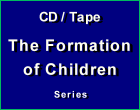Right to Life
 |
 |
 |
 |
 |
 |
 |
How Your Money Is Being Used
to Corrupt Adolescent Girls
Old timers in the prolife movement will remember the Population Crisis Committee and the Hugh Moore Fund among the earliest population control groups during the late 1960s and early 1970s. These groups have morphed into a single group called Population Action International (PAI).
The new tax-funded $85 million program to make sex instruction, contraception and abortion available for young girls will be funded by the federal U.S. A.I.D. in cooperation with other private and public population control agencies worldwide. Take a gander at the scope of this international program which the Obama Administration wants to put into place before the next election.
This press release is from PAI's U.S. Global Strategy for the Empowerment of Adolescent Girls. PAI is, in its own words, a "global organization advancing the right to affordable, quality contraception and reproductive health care for every woman, everywhere." This new program is one giant cover for spreading the anti-life agenda worldwide with U.S. tax dollars and is already in motion.
The new tax-funded $85 million program to make sex instruction, contraception and abortion available for young girls will be funded by the federal U.S. A.I.D. in cooperation with other private and public population control agencies worldwide. Take a gander at the scope of this international program which the Obama Administration wants to put into place before the next election.
This press release is from PAI's U.S. Global Strategy for the Empowerment of Adolescent Girls. PAI is, in its own words, a "global organization advancing the right to affordable, quality contraception and reproductive health care for every woman, everywhere." This new program is one giant cover for spreading the anti-life agenda worldwide with U.S. tax dollars and is already in motion.
On March 15, 2016, Secretary of State John Kerry launched the U.S. Global Strategy for the Empowerment of Adolescent Girls. The strategy brings together State Department (including PEPFAR), USAID, Peace Corps and the Millennium Challenge Corporation to “ensure adolescent girls are educated, healthy, economically and socially empowered, and free from violence and discrimination, thereby promoting global development, security, and prosperity.”
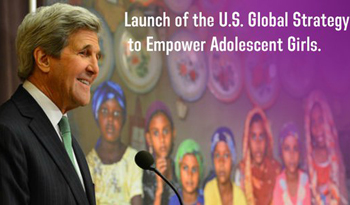
Kerry pledges millions to boost programs to ‘empower’ girls with contraception services
Addressing major barriers to sexual and reproductive health
Adolescent girls face many challenges related to their sexual and reproductive health. These challenges are often deeply interconnected and are compounded with other issues, such as girls’ education and economic empowerment. The strategy addresses several of these challenges including child, early and forced marriage, female genital mutilation, gender-based violence, early pregnancy, HIV, and an overall lack of information and access to sexual and reproductive health services.
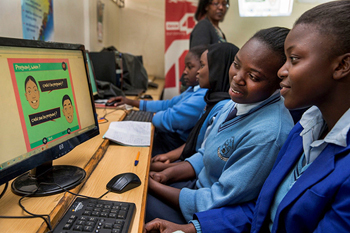
Girls in Nairobi take a sex education class; below, a US teen is counseled on contraceptive ‘choices’

To accomplish this, the State Department will continue to engage with governments and civil society to advocate for the legal and policy reforms needed to “institute comprehensive sexuality education in national curricula, and remove barriers to sexual and reproductive rights and comprehensive, accessible, quality health services.” (pg. 20). USAID will continue to provide support to programs and interventions to ensure sexual and reproductive health information, family planning, and other reproductive health services are available for girls.
• HIV: In sub-Saharan Africa, girls account for 71 percent of new HIV infections among adolescents. Recognizing these girls as a key population in efforts to address the global HIV epidemic, the US Global Strategy for the Empowerment of Adolescent Girls will complement and reinforce the holistic approach of DREAMS, an ambitious new PEPFAR initiative to drastically reduce HIV infections among adolescent girls in 10 countries in sub-Saharan Africa.
DREAMS will address the structural drivers that increase a girl’s risk of HIV, such as GBV, poverty, and lack of education. Included in DREAMS evidence-based interventions are HIV testing and counseling, PrEP, contraceptive method mix and sex education. Accompanying the release of the Strategy, Secretary Kerry announced that $40 million dollars of DREAMS Innovation Challenge funding would be designated to help keep girls in school.
• Child, Early and Forced Marriage (CEFM): CEFM is a severe violation of girls’ rights and also puts their health at risk. A key objective of the strategy is to change harmful norms and practices, such as CEFM and female genital mutilation (FGM). Addressing CEFM and meeting the needs of already-married girls is recognized as an issue that cuts across U.S. foreign policy and assistance work.
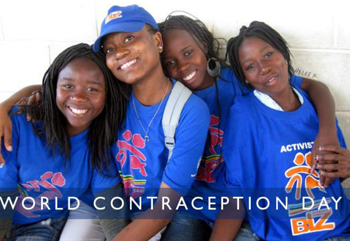
Taxpayer dollars fund international programs like World Contraception Day
• Adolescent Girls in Humanitarian Settings: Although much of the strategy focuses on adolescent girls in the development context, it does recognize the increased challenges girls face in humanitarian emergencies, including heightened risks of early marriage and gender-based violence.
Highlighting the U.S.-led initiative “Safe from the Start”, the strategy emphasizes the need to quickly deploy GBV specialists at the onset of an emergency and ensure that all staff has received training on gender-sensitive response and the specific needs of adolescent girls. Also, included is the need to identify adolescent girls and ensure that they are able to access targeted “girl-specific” services, including sexual and reproductive health services.
Articulating a U.S. vision for adolescent girls
The Global Strategy for the Empowerment of Adolescent Girls seeks to build off of the U.S.’ existing framework of gender and youth-focused policies initiatives. It is an articulation of an overall goal and objectives for the government’s work on adolescent girls in our foreign assistance, humanitarian assistance, and diplomatic efforts. In many ways, it is a vision of what could be accomplished by fully leveraging the resources and influence of the U.S. government to intervene on behalf of girl’s rights and well-being around the world.
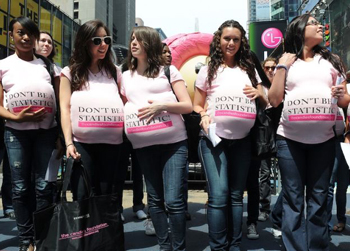
Girls march for reproductive services so they won't become teen mothers - not a word about morals
Also, although the strategy calls for an inter-agency working group to be formed to measure progress and assess the strategy in relation to other existing policy frameworks, it’s unclear how strong of a coordinating and accountability mechanism this will be. Finally, with less than a year left in the Obama administration, it’s unclear how deeply the strategy can be embedded in each of the implementing agencies.

Posted April 20, 2016
______________________
______________________






